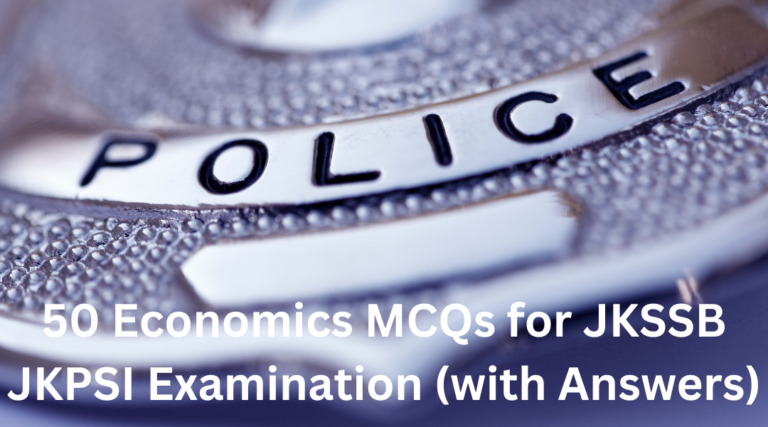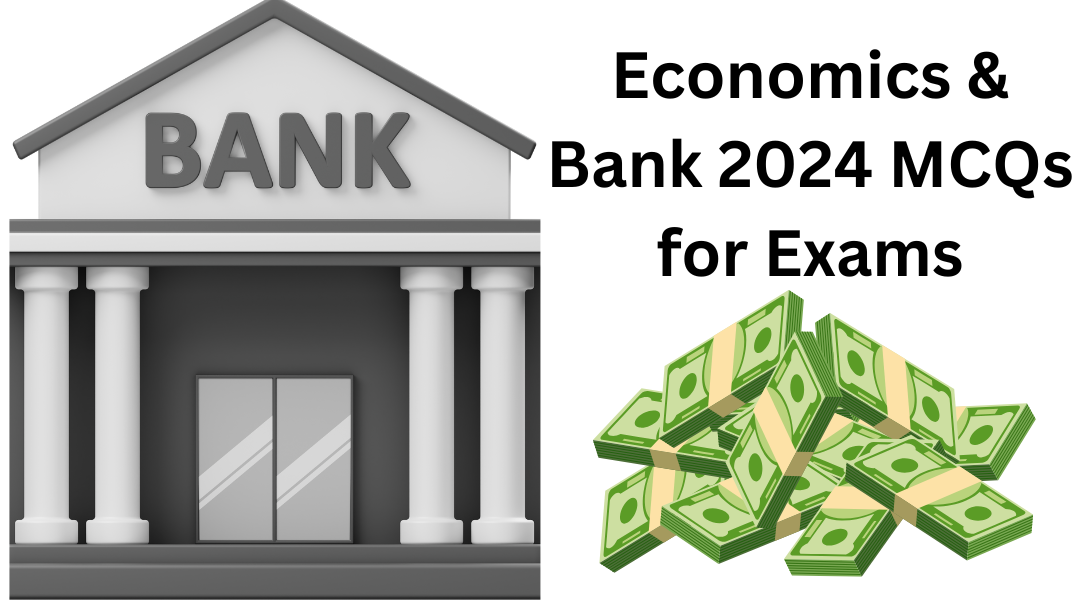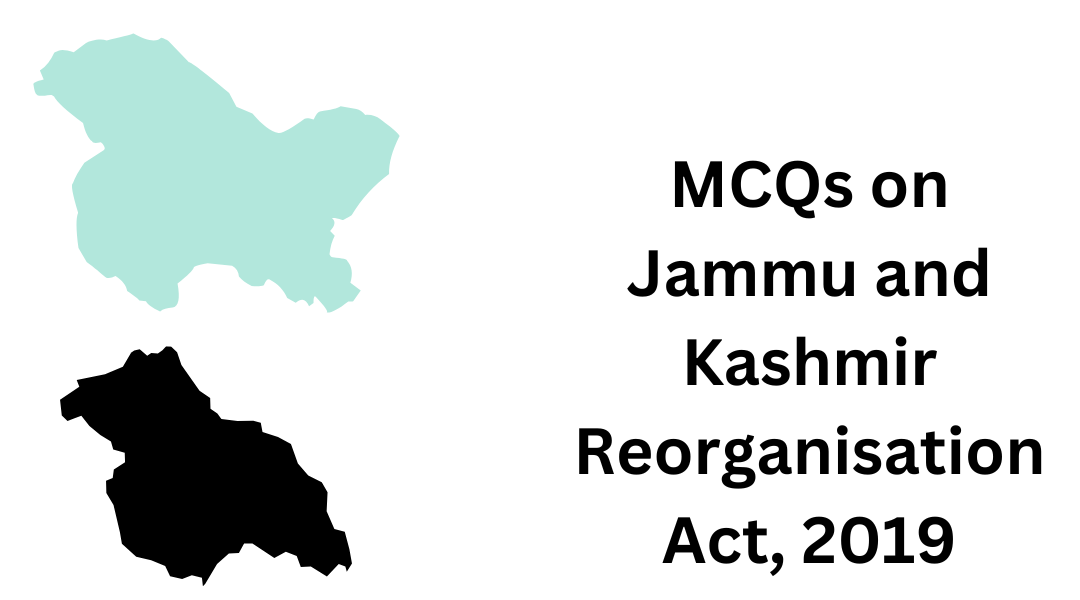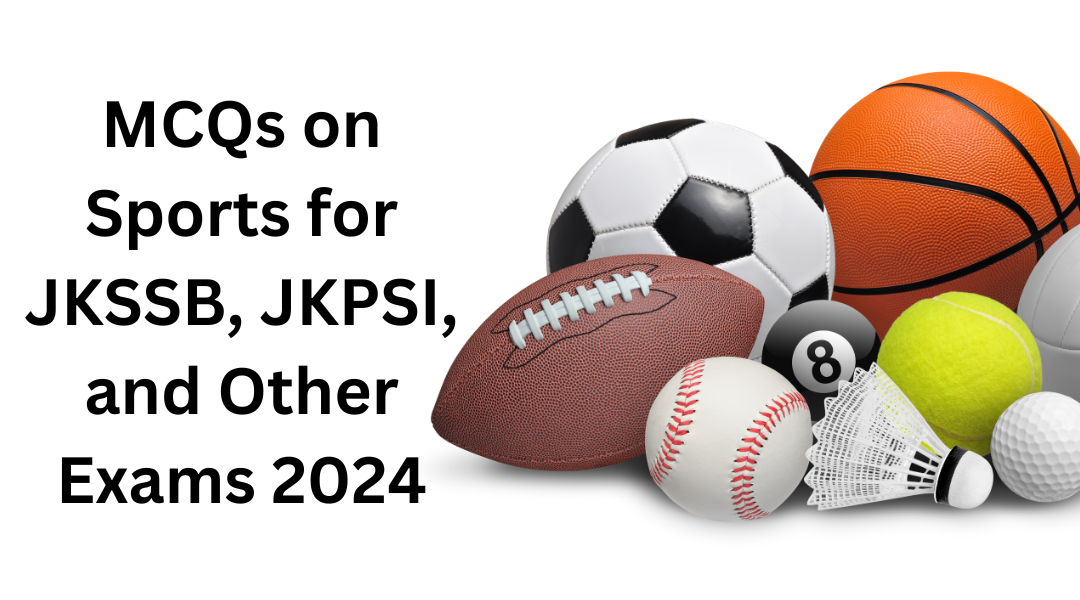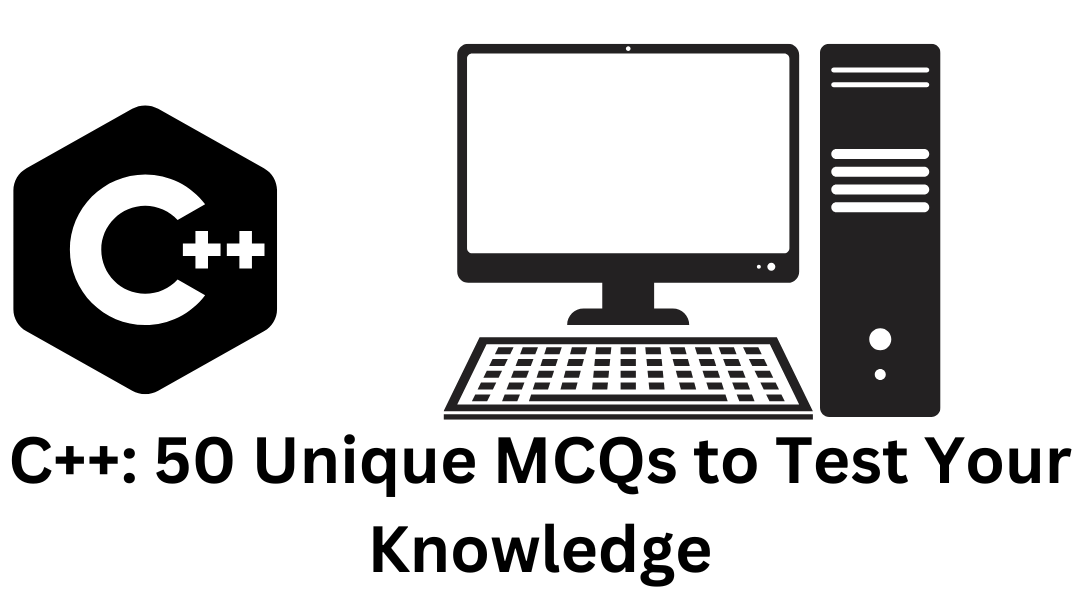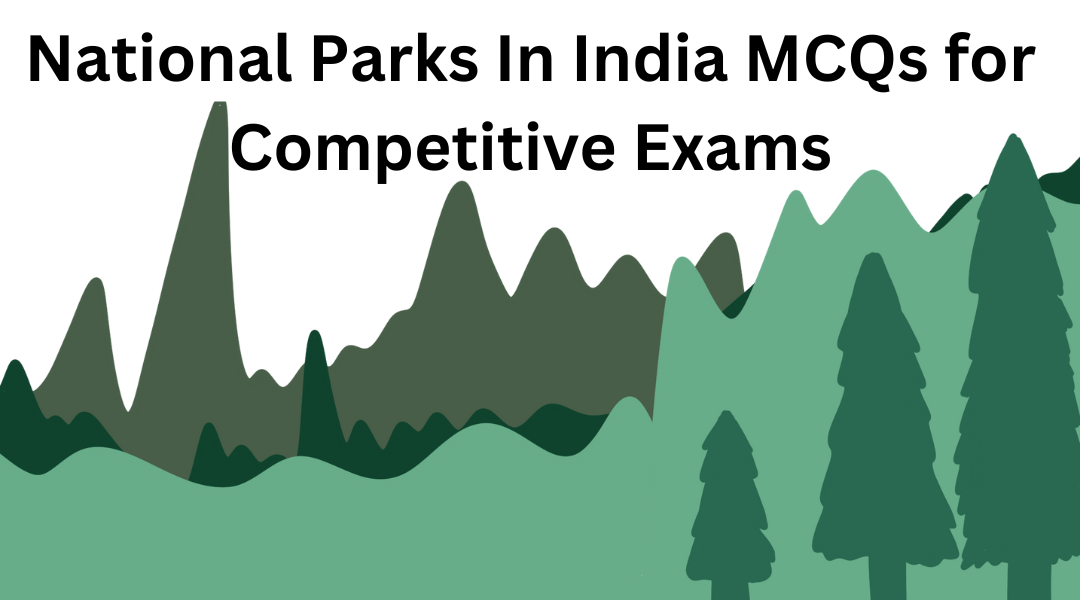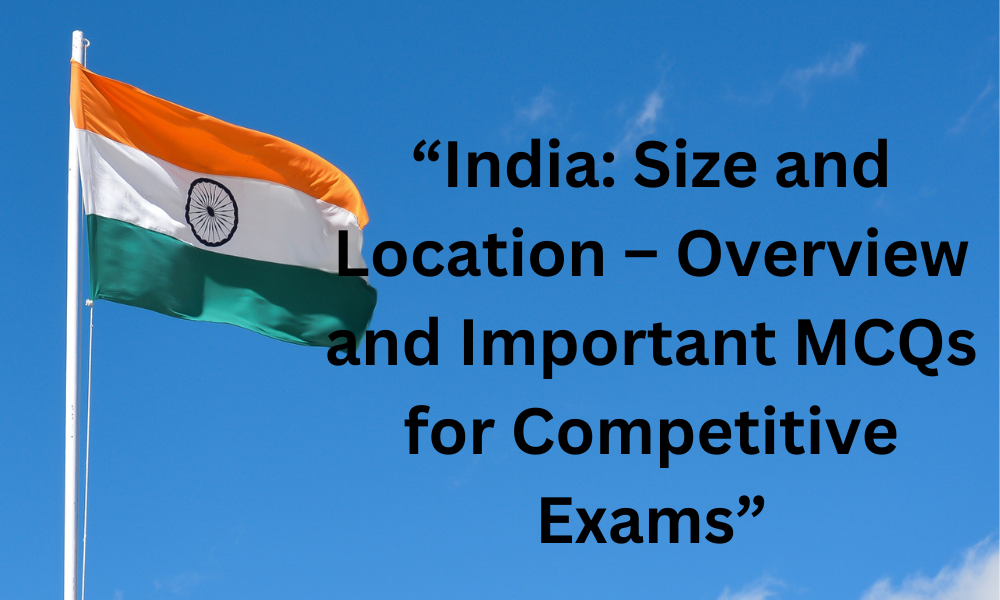The Jammu and Kashmir Services Selection Board (JKSSB) and Jammu and Kashmir Police Sub-Inspector (JKPSI) examinations require thorough preparation, particularly in economics. To help you get ready for these competitive exams, we’ve compiled a set of 50 multiple-choice questions (MCQs) related to economics that are likely to appear in the exams. These questions cover a wide range of topics, from basic concepts to important theories and policies. Let’s dive into the MCQs:
1. Which of the following is a primary function of the Reserve Bank of India (RBI)?
A) Issue currency notes
B) Impose taxes
C) Formulate government policies
D) Provide loans to public sector banks
Answer: A) Issue currency notes
2. What does GDP stand for in economic terms?
A) Gross Domestic Product
B) General Domestic Product
C) General Development Plan
D) Gross Development Plan
Answer: A) Gross Domestic Product
3. Which of the following is considered a capital good?
A) Car
B) Tractor
C) Bread
D) Shoe
Answer: B) Tractor
4. The ‘Invisible Hand’ concept was introduced by which economist?
A) Adam Smith
B) John Maynard Keynes
C) Karl Marx
D) Milton Friedman
Answer: A) Adam Smith
5. Which tax is considered indirect?
A) Income Tax
B) Sales Tax
C) Wealth Tax
D) Corporate Tax
Answer: B) Sales Tax
6. Which of the following is not a type of unemployment?
A) Frictional
B) Cyclical
C) Structural
D) Inflationary
Answer: D) Inflationary
7. The concept of ‘Demand-Pull Inflation’ occurs when:
A) Demand increases faster than supply
B) Supply exceeds demand
C) Wages increase while prices fall
D) Both demand and supply increase at the same rate
Answer: A) Demand increases faster than supply
8. What is the main objective of the Goods and Services Tax (GST)?
A) To increase government revenue
B) To simplify the tax structure
C) To reduce inflation
D) To increase exports
Answer: B) To simplify the tax structure
9. Which of the following is an example of a public good?
A) Private school
B) Street lighting
C) Car
D) TV
Answer: B) Street lighting
10. Which of the following is a feature of a monopoly?
A) Multiple sellers
B) Free entry and exit
C) Single seller with unique product
D) Homogeneous products
Answer: C) Single seller with unique product
11. Which type of inflation is caused by a rise in production costs?
A) Cost-push inflation
B) Demand-pull inflation
C) Built-in inflation
D) Structural inflation
Answer: A) Cost-push inflation
12. The national income of a country is measured by:
A) GDP
B) GNP
C) NNP
D) All of the above
Answer: D) All of the above
13. Who is known as the father of modern economics?
A) John Maynard Keynes
B) Adam Smith
C) Milton Friedman
D) David Ricardo
Answer: B) Adam Smith
14. In an economy, if the price of a product increases, the quantity demanded tends to:
A) Increase
B) Decrease
C) Stay constant
D) Vary depending on the income of the consumers
Answer: B) Decrease
15. Which of the following is NOT a characteristic of perfect competition?
A) Homogeneous products
B) Many buyers and sellers
C) No entry and exit barriers
D) Product differentiation
Answer: D) Product differentiation
16. Which country is the largest producer of oil in the world?
A) USA
B) Saudi Arabia
C) Russia
D) China
Answer: A) USA
17. What is the main purpose of monetary policy?
A) To regulate government spending
B) To control inflation and stabilize currency
C) To collect taxes
D) To create new businesses
Answer: B) To control inflation and stabilize currency
18. Which of the following is an example of a non-renewable resource?
A) Wind energy
B) Solar energy
C) Coal
D) Forests
Answer: C) Coal
19. The relationship between price and quantity demanded is generally:
A) Direct
B) Inverse
C) Unaffected by price
D) Unpredictable
Answer: B) Inverse
20. Which economic theory emphasizes government intervention during economic downturns?
A) Classical economics
B) Keynesian economics
C) Monetarism
D) Supply-side economics
Answer: B) Keynesian economics
21. Which of the following is not a function of commercial banks?
A) Issuing currency
B) Providing loans
C) Accepting deposits
D) Facilitating foreign exchange
Answer: A) Issuing currency
22. What is the primary objective of fiscal policy?
A) To control inflation
B) To stabilize currency
C) To regulate government spending and taxation
D) To promote exports
Answer: C) To regulate government spending and taxation
23. Which of the following is a characteristic of oligopoly?
A) Many sellers
B) Barriers to entry
C) Homogeneous products
D) Free competition
Answer: B) Barriers to entry
24. What does the Laffer Curve illustrate?
A) Relationship between tax rates and government revenue
B) Relationship between income and consumption
C) Relationship between money supply and inflation
D) None of the above
Answer: A) Relationship between tax rates and government revenue
25. The concept of ‘opportunity cost’ refers to:
A) The total cost of production
B) The cost of forgoing the next best alternative
C) The cost of labor
D) The cost of raw materials
Answer: B) The cost of forgoing the next best alternative
26. Which of the following is the primary objective of the Indian Planning Commission?
A) Reducing government debt
B) Promoting economic growth and development
C) Increasing tax revenues
D) Privatizing public sector enterprises
Answer: B) Promoting economic growth and development
27. In the context of international trade, what does WTO stand for?
A) World Trade Organization
B) World Taxation Organization
C) Worldwide Trade Organization
D) World Technology Organization
Answer: A) World Trade Organization
28. Which of the following is NOT an example of a government expenditure?
A) Social welfare payments
B) Infrastructure development
C) Tax revenues
D) Education spending
Answer: C) Tax revenues
29. What is the basic aim of microeconomics?
A) To study the economy as a whole
B) To study individual market behavior
C) To study inflation
D) To study national income
Answer: B) To study individual market behavior
30. The law of diminishing marginal utility states that:
A) As more of a good is consumed, the marginal utility decreases
B) The total utility increases with consumption
C) Utility is constant
D) Utility increases with time
Answer: A) As more of a good is consumed, the marginal utility decreases
31. Which economic indicator is commonly used to measure a country’s standard of living?
A) GDP
B) Inflation rate
C) Per capita income
D) Interest rate
Answer: C) Per capita income
32. The ‘Subsidy’ is a form of:
A) Tax
B) Government expenditure
C) Trade restriction
D) Private sector contribution
Answer: B) Government expenditure
33. Which of the following is an example of a positive externality?
A) Pollution
B) Education
C) Traffic congestion
D) Smoking
Answer: B) Education
34. The ‘Monetary Policy Committee’ is responsible for setting the:
A) Fiscal policy
B) Repo rate
C) GST rates
D) Corporate tax rate
Answer: B) Repo rate
35. Which of the following is an example of a progressive tax?
A) Sales tax
B) Income tax
C) Excise tax
D) Property tax
Answer: B) Income tax
36. Which of the following is NOT a part of the money supply?
A) Coins and paper currency
B) Bank deposits
C) Government bonds
D) Foreign exchange reserves
Answer: C) Government bonds
37. Which of the following is an example of a monopolistic market?
A) Gas supply
B) Agricultural products
C) Fast food chains
D) Mobile network providers
Answer: A) Gas supply
38. Which of the following is a key feature of a mixed economy?
A) Complete government control
B) Private ownership of resources
C) Complete free market
D) Limited government intervention
Answer: B) Private ownership of resources
39. The term ‘Hyperinflation’ refers to:
A) A slight increase in inflation
B) Rapid and uncontrollable inflation
C) No inflation
D) Stable prices over time
Answer: B) Rapid and uncontrollable inflation
40. Which of the following measures the rate of inflation?
A) Consumer Price Index (CPI)
B) Gross Domestic Product (GDP)
C) Interest rates
D) Tax rates
Answer: A) Consumer Price Index (CPI)
41. Which of the following is considered a leading economic indicator?
A) Unemployment rate
B) Consumer Price Index
C) Stock market performance
D) National income
Answer: C) Stock market performance
42. Which of the following is a feature of a barter system?
A) Exchange of goods without money
B) Use of currency
C) Only services are exchanged
D) Centralized control of trade
Answer: A) Exchange of goods without money
43. Which of the following is a tool of monetary policy?
A) Taxation
B) Government spending
C) Open market operations
D) Budgeting
Answer: C) Open market operations
44. Which of the following is the most liquid form of money?
A) Real estate
B) Gold
C) Cash
D) Bonds
Answer: C) Cash
45. Which of the following is an example of a public sector undertaking in India?
A) Reliance Industries
B) State Bank of India
C) Tata Steel
D) Infosys
Answer: B) State Bank of India
46. What is the main objective of the ‘Atmanirbhar Bharat’ initiative?
A) Promoting imports
B) Promoting self-reliance and local manufacturing
C) Reducing unemployment
D) Export growth
Answer: B) Promoting self-reliance and local manufacturing
47. Which economic term describes the total value of goods and services produced within a country’s borders?
A) GNP
B) GDP
C) NNP
D) CPI
Answer: B) GDP
48. Which of the following is a short-term objective of monetary policy?
A) Price stability
B) Economic growth
C) Full employment
D) Currency devaluation
Answer: A) Price stability
49. What is meant by ‘Fiscal Deficit’?
A) Excess of government expenditure over its revenue
B) Government revenue exceeding expenditure
C) A balanced budget
D) Private sector borrowing
Answer: A) Excess of government expenditure over its revenue
50. Which of the following is an example of an oligopoly market structure?
A) Wheat farming
B) Telecommunications
C) Local grocery stores
D) Shoe manufacturing
Answer: B) Telecommunications
These 50 MCQs cover various aspects of economics, from basic definitions to complex theories and real-world applications. By preparing these questions, you will not only boost your understanding of economics but also improve your chances of performing well in the JKSSB and JKPSI exams. Keep practicing, and best of luck with your studies!
Also Read: MCQs on Geography of India for JKSSB JKPSI Exam
You may also like to Read: “Crops and Minerals: Essential MCQs for SSC, UPSC, and State Exams”

Asif Iqbal Wani is a professional content writer with over 5 years of experience in the education niche. With a speciality for content creation that’s thought-provoking and engaging, Arun specializes in making study guides and resources for exams and curriculum-based content.
With a zeal for learning, Asif comes across as a vibrant educator who simplifies the most difficult concepts into information that is easily digested, enabling learners to achieve success academically. His commitment to accuracy and creativity ensures that every piece of content not only teaches but also inspires.
Asif is committed to providing high-quality impactful content that works well for different student and faculty requirements.
